
Leaf through this issue of BBC Sky at Night Magazine, look at the numerous eye-catching photographs and marvel at the beauty of the cosmos. Then realise that everything we can see with astronomical telescopes - stars, nebulae, galaxies - amounts to a mere 5 per cent of the total content of the Universe. The remaining 95 per cent is composed of two mysterious components: dark energy - the 'force' behind the accelerating expansion of the Universe - and dark matter. We know they exist, but their true nature eludes us.
Enter Euclid, the next space mission in the Cosmic Vision science programme of the European Space Agency (ESA). Due to launch into space in the first half of July from Cape Canaveral in Florida, this ambitious space telescope will focus on the dark Universe by mapping and studying no less than two billion galaxies. "Nothing like this has ever been done before," says Euclid's independent legacy scientist Ivan Baldry of Liverpool John Moores University.
Euclid's observations will reveal the expansion history of our Universe (which is governed by dark energy) and the three-dimensional distribution of mass (which mainly consists of dark matter). As a bonus, the mission will check whether Albert Einstein's general theory of relativity is the right formulation of gravity on cosmic scales. According to project manager Giuseppe Racca at ESTEC (ESA's science and technology centre in Noordwijk, the Netherlands), "This combination is the unique selling point of Euclid".
The road to launch
The Euclid mission was selected in 2011 and formally adopted by ESA in the summer of 2012. NASA became a partner in the project in early 2013. At present, the Euclid consortium has about 2,000 members from 13 European countries plus the United States.
Denne historien er fra July 2023-utgaven av BBC Sky at Night Magazine.
Start din 7-dagers gratis prøveperiode på Magzter GOLD for å få tilgang til tusenvis av utvalgte premiumhistorier og 9000+ magasiner og aviser.
Allerede abonnent ? Logg på
Denne historien er fra July 2023-utgaven av BBC Sky at Night Magazine.
Start din 7-dagers gratis prøveperiode på Magzter GOLD for å få tilgang til tusenvis av utvalgte premiumhistorier og 9000+ magasiner og aviser.
Allerede abonnent? Logg på
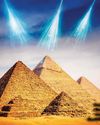
Putting cosmic rays to work
These penetrating interstellar particles have applications from astronomy to archaeology
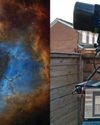
Set up your first imaging sequence
How to automate and coordinate your gear over multiple nights of imaging

The Universe without gravity
Life with no gravity might sound a fun idea, but as Govert Schilling explains, shutting off this pivotalforce would spell disaster for Earth and beyond
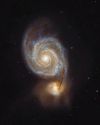
How to blend images taken with different camera setups
Combine data captured at varied focal lengths to create rich, deep images

INSIDE THE SKY AT NIGHT
Back in September 2021, The Sky at Night show spoke to Carly Howett about NASA's then upcoming Lucy mission. As the spacecraft now approaches its main targets - the Trojan asteroids - we check in with her to see how the mission is going

The science of SCI-FI
We love a good sci-fi film, but do they get the science right? Amy Arthur picks six of the big mistakes made in space films
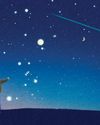
Seeing in a new light
It's National Astronomy Week this month, so take a tip from Mark Westmoquette and let mindful stargazing change your perspective on your life and problems
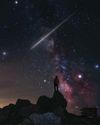
What to do if you find a meteorite
Ever come across an unusual rock and wondered if it's a meteorite? Mark McIntyre explains how to tell if that stone really is a fragment from outer space
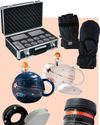
GEAR
Charlotte Daniels rounds up the latest astronomical accessories

Q&A WITH A STELLAR ECLIPSE SPECIALIST
Many stars are gravitationally locked inside multi-star systems, but a rare new triple-star system has set a new record for how cosy these clusters can get